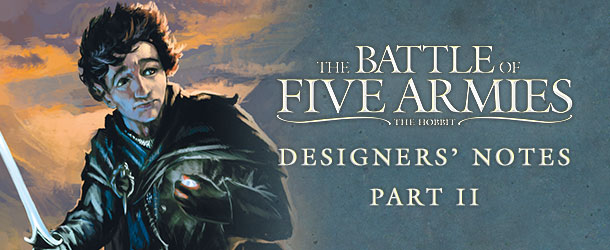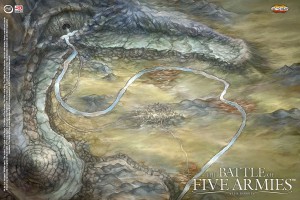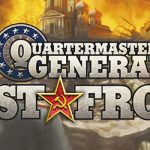As we wrote in the previous article of this series, it's been almost ten years since we designed War of the Ring. Now, we finally have the chance to follow a dream we've had for a long time: to create a strategy game based on “The Hobbit” by J.R.R. Tolkien.
There is not a lot of military action in that book… but as you know, there is an epic final battle, narrated in great detail, involving all the peoples of Middle-earth, that is a pivotal point of the narrative: The Battle of Five Armies.
It was natural for us to think of this event as the main focus of our dream, and we started to discuss how we should re-create it in a game.
We first considered – and set aside – the idea of designing a grand strategy game along the lines of War of the Ring. We can almost take for granted there are events in “The Hobbit” which happen “behind the scenes,” and the Battle is the final outcome of those events. But these events are so well hidden – or thinly sketched – in the book, the game would become almost pure speculation, and that was contrary to our design philosophy – to stay as close as we can to the source, and invent “only” what is needed to make the game varied and interesting.
So, we decided our game would remain focused around the Battle itself. Reading and re-reading the story, it was clear there was enough going on to allow for a very exciting and re-playable game. Unexpected allies, daring attempts, heroic deeds, sweeping reversals… The Battle of Five Armies was so fully packed with events there was no real need to look much farther. The game would simulate the battle, from its beginning to end. The Lonely Mountain and the Valley of Dale were to be the backdrop of the action, and the game was to be developed to be more tactical in scope than War of the Ring.
The next step was to consider how to modify the War of the Ring system – well suited for a grand strategy game – to work on this tactical scale. The answer was readily at hand…
In 2006, we published “Battles of the Third Age,” an expansion for WotR, that added more content to the game. When designing that expansion, we were not happy with “simply” expanding WotR, so we did something more… We developed a full tactical/operational battle system based on the WotR engine, and applied it to two of the major battles of the War of the Ring – the battle for Rohan and the Battle for Minas Tirith.
We did this because, at the time, the license of our publisher (Nexus), did not permit creation of new LotR-based games, apart from War of the Ring. We were eager to find a way to depict the great battles of the War of the Ring in a game, and our publisher and the licensor agreed that such a game could be published as long as it was playable as a WotR expansion – hence the decision to market them together as a single product. This tactical variant of the system was widely appreciated (“Battles of the Third Age” has an 8.13 rating on Boardgamegeek), but we always had the feeling that it went a little “under the radar” for many players, due to the fact it was presented as part of an expansion, and was seen as "just a sidekick” to the strategy game.
Was this system good enough to be the main engine of The Battle of Five Armies? Yes and no. Yes, because the scope of the system was very close to what we were looking for. No, because we realized the system could be improved, and expanded.
First of all, we wanted the new game experience to be more streamlined than it was in Rohan/Minas Tirith. Those games had several “little rules” which added a degree of complexity without increasing the realism in a significant way. We could get the game to play faster and be more fun by cutting some “fat” here and there. And most important, we realized the characters deserved more attention than they got in Rohan/Minas Tirith. We wanted the impact of individuals to be seen more clearly and with more strength, to give them the heroic stature they deserved.
Of course, we also wanted the game to be varied, even if simulating a single battle. And finally, we wanted the game to be shorter in duration than War of the Ring, as, for many fans, its length is one of the things that prevents it from being played as often as they would like.
With this goals in mind, our design work began…
To be continued...











Follow Us on